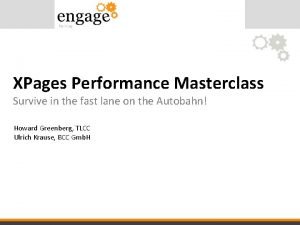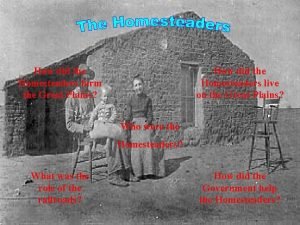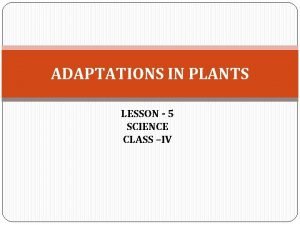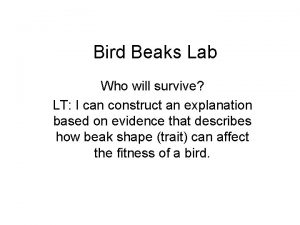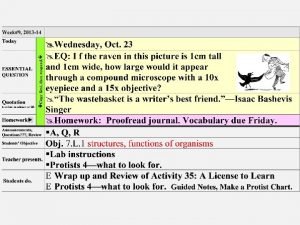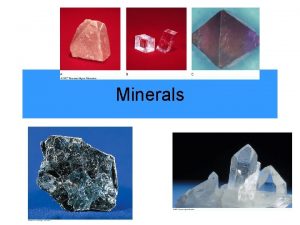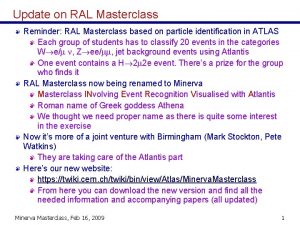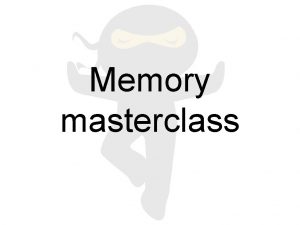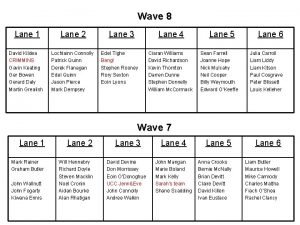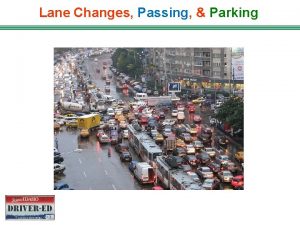XPages Performance Masterclass Survive in the fast lane



































































- Slides: 67

XPages Performance Masterclass Survive in the fast lane on the Autobahn! Howard Greenberg, TLCC Ulrich Krause, BCC Gmb. H

About: Ulrich Krause • Administrator /Developer since 1993 • Senior Software Architect at BCC, Germany • Open. NTF Contributor • IBM Champion 2011/2012/2013/2014 • Blog http: //www. eknori. de • Twitter @eknori • Mail ulrich. krause@eknori. de

About: Howard Greenberg • Notes/Domino developer, admin, instructor since 1993 • Before that was at IBM for 11 years in the PC Company • Partner at TLCC, a provider of courses for Notes/Domino – And lots of XPages courses! – Some are even FREE! • • IBM Champion 2012/2013/2014 Host a great monthly webinar series! Twitter @TLCCLtd Mail howardg@tlcc. com

Agenda • • • What factors affect Performance? JSF Lifecycle Partial Update / Partial Execute Tools Coding Factors – View. Navigator vs. Get. Item. Value – SSJS vs. Java – Stringbuilder • Questions? ? ?

XPages Request

Hardware • The hardware used has a significant influence on performance. There are 3 key elements: – CPU – Main Memory – Hard Disk

Network • Latency – Time taken for data transmission between multiple computers on a network • Bandwidth – Rate of transmission of data • Greater Bandwidth + Lower Latency ----------------= Better Connection

Client & Browser • • Hardware How many data requests / responses are transmitted How much data is transferred (size) Caching of resources How much CSJS runs Size / complexity of the CSS Complexity of the site structure

Limiting factors on performance • Browser / HTTP server – Network latency – distance/time to server. – Bandwidth – size of files. – Browser limits on concurrent downloads • IE 7 allows 2 downloads, IE 8 allows 6 • HTTP Server / App Server – HTTP Server JVM heap size & garbage collector – CPU time, competition between threads, gives slower response times – Threads, limited to 40 by default

Limiting factors on performance • App Server / Domino context – Read design elements from the NSF (XPage. class files, form structure, etc) – Backend API calls may be expensive, especially for large data sets – Design elements may be network requests

Limiting factors on performance • Servlet / Lifecycle – Restore control tree – file system read. Control tree locking – no concurrent access – Rendered re-evaluated for every control for most phases • Browser/Client Java. Script/Dojo – Inline Java. Script blocks insertion of later HTML elements into the DOM tree – Dojo does AJAX requests for. js files for dojo modules that are not loaded

General Performance Options • notes. ini – HTTPJVMMax. Heap. Size. Set=1 – HTTPJVMMax. Heap. Size=256 M • Should be set to ¼ of the available RAM • Domino Administrator – HTTP server Disable Logging – HTTP server thread count defaults to 40 • link to IBM article

General Performance Options (cont. ) • Debugging enabled in notes. ini ? – Java. Enable. Debug=1 – Java. Debug. Options=transport=dt_socket, server=y, suspend=n, ad dress=8000 – Javascript. Enable. Debug=1

Reducing Memory Utilization • xsp. persistence. mode= – Defines the persistence mode for the JSF pages • file: All the pages are persisted on disk • fileex: All the pages are persisted on disk except the current one, which stays in memory • <else>: All the pages stay in memory (tree mode)

Java. Script/CSS Aggregation • Groups many DOJO, CSS / JS files into a single file – – Less requests from the browser to the server Performance improvements on networks with high latency Enhanced performance parsing CSS / JS Fewer connections to the server On the Server: xsp. properties: xsp. resources. aggregate=true

Java. Script/CSS Aggregation

XPages Pre. Load • • XPages. Preload=1 New Feature in Notes / Domino 8. 5. 3 Works on Server and Client Java classes from the XPages runtime plug-ins loaded from a fixed list of runtime classes ( 435 in ND 8. 5. 3 ) – com. ibm. xsp. core, common utility, JS wrapper, FSF runtime classes • Java classes referenced in *-faces. config. xml – XPages control renderer, data sources, complex types

XPages Pre. Load • XPages. Preload. DB=Server!!Db. nsf/XPage. xsp, my. Local. Db. nsf • XPages. Preload. Trace=1 ( as of 9. 0. 1 ) • Works at the application level • The application is loaded on the client / server startup into memory – This happens even when the application is first opened in the browser

XPages Pre. Load (cont. ) • For each entry in the notes. ini variable, an XPage URL is generated and sent to the server • The application is loaded, and the HTML generated • The XPages runtime discards the HTML, but retains the application in memory

Scoped Variables • application. Scope – Are visible for all users of one application – Expires some time after the last user used an application. Scope variable – application. Scope variables are NOT persistent forever • session. Scope – Is valid through the session of the current user – A user session expires after some time of inactivity – Uses don't have access to the session. Scope variables of other users

Scoped Variables (cont. ) • view. Scope – Is visible for views on the current page only. – Useful for transporting a search query to a view. • request. Scope – Is valid through one request of the current user. – That includes refreshing of a page.

Caching with Application Scope

JSF Life Cycle - Post Request Restore View • Restore component tree • Events: • after. Restore. View Apply Request Values • Copy data to Editable controls Process Validations • Validations • Converters Update Model Values • Move values to data source Invoke Application • Application logic • Events: • on. Client. Load (XPage, etc) • on… events of button, etc. Render Response • Convert to HTML, etc. • Events: • before. Render. Reponse • after. Render. Response

Lifecycle 1 XPage – Initial Page Load Render Response • Rendered property for id: label 1 • Label property for id: label 1 • Rendered property for id: input. Text 1 • Default value property for id: input. Text 1 • Rendered property for id: label 2 • Rendered property for id: combo. Box 1 • values property for id: combo. Box 1 • Rendered property for id: computed. Field 1 • Value property for id: computed. Field 1 • Rendered property for id: computed. Field 2 • Value property for id: computed. Field 2

Lifecyle 1 – Submit (Full Update) Restore View Apply Request Values (8) • Rendered property for id: label 1 • Rendered property for id: input. Text 1 • Rendered property for id: label 2 • Rendered property for id: combo. Box 1 • Rendered property for id: computed. Field 2 Update Model Values (8) • Rendered property for id: label 1 • Rendered property for id: input. Text 1 • Rendered property for id: label 2 • Rendered property for id: combo. Box 1 • Rendered property for id: computed. Field 2 Invoke Application (1) • On. Click event for id: button 1 39 SSJS Calls Process Validations (11) • Rendered property for id: label 1 • Rendered property for id: input. Text 1 • Validation for input. Text 1 • Default value property for id: input. Text 1 • Rendered property for id: label 2 • Rendered property for id: combo. Box 1 • values property for id: combo. Box 1 • Rendered property for id: computed. Field 2 Render Response (11) • Rendered property for id: label 1 • Label property for id: label 1 • Rendered property for id: input. Text 1 • Rendered property for id: label 2 • Rendered property for id: combo. Box 1 • values property for id: combo. Box 1 • Rendered property for id: computed. Field 1 • Value property for id: computed. Field 1 • Rendered property for id: computed. Field 2 • Value property for id: computed. Field 2

When to Execute - # vs $ <xp: label id="label 1"> <xp: this. value> <![CDATA[#{javascript: return “My Label”; }]]> </xp: this. value> </xp: label> • # is Compute dynamically – Executed every time the page is rendered – Use for values that are likely to change • $ is Compute on Page Load – Executed when the page is first loaded – Use for values that don't change

Lifecyle 2 – Submit (Full Update) - On Page Load Restore View Changed all Rendered and Values (combo. Box) to only compute on Page Load Update Model Values • Rendered property for id: label 1 • Rendered property for id: input. Text 1 • Rendered property for id: label 2 • Rendered property for id: combo. Box 1 • Rendered property for id: computed. Field 2 Apply Request Values • Rendered property for id: label 1 • Rendered property for id: input. Text 1 • Rendered property for id: label 2 • Rendered property for id: combo. Box 1 • Rendered property for id: computed. Field 2 Invoke Application (1) • On. Click event for id: button 1 6 SSJS Calls, saved 33 Process Validations (2) • Rendered property for id: label 1 • Rendered property for id: input. Text 1 • Validation for input. Text 1 • Default value property for id: input. Text 1 • Rendered property for id: label 2 • Rendered property for id: combo. Box 1 • values property for id: combo. Box 1 • Rendered property for id: computed. Field 2 Render Response (3) • Rendered property for id: label 1 • Label property for id: label 1 • Rendered property for id: input. Text 1 • Rendered property for id: label 2 • Rendered property for id: combo. Box 1 • values property for id: combo. Box 1 • Rendered property for id: computed. Field 1 • Value property for id: computed. Field 1 • Rendered property for id: computed. Field 2 • Value property for id: computed. Field 2

But I need dynamic Rendering! Options for dynamically computing the Rendered: • Scoped variables – Still get calculated but do the heavy lifting once and then read the scoped variable in the Rendered property • Data. Contexts – Compute a value at the Xpage or Panel level once – Refer to the value using EL (much faster than SSJS)

Data. Context • Can be thought of as global variables • Value can be computed dynamically or on page load – Warning: Computing dynamically has performance impact • Can be scoped to any level that a data source can – XPage, Custom Control or Panel – Set a data. Context in a panel in a repeat control to avoid multiple references to a Notes. Document's item • Can be referenced using EL – Benefit: Not having to go through the SSJS parser

Data. Context - Pitfall • Be careful binding data context variables dynamically – They will be recomputed multiple times, even when in partial execution mode and if they are not in use (six times!) • Apply Request Values • Process Validations • Update Model Values • Invoke Application • Twice in Render Response! • If computed on page load then only computed once on page load • See Paul Withers blog entry to learn how to set a data context value via code

Partial Refresh vs. Partial Execution? • Partial Refresh (Update) – Computes entire XPage, only sends back what is in the partial refresh id (refresh. Id) • Partial Execution – Only calculates what is in the area specified (exec. Id)

Partial Refresh Demo - Results Restore View Apply Request Values (8) • Rendered property for id: label 1 • Rendered property for id: input. Text 1 • Rendered property for id: label 2 • Rendered property for id: combo. Box 1 • Rendered property for id: computed. Field 2 Update Model Values (8) • Rendered property for id: label 1 • Rendered property for id: input. Text 1 • Rendered property for id: label 2 • Rendered property for id: combo. Box 1 • Rendered property for id: computed. Field 2 Invoke Application (1) • On. Click event for id: button 1 Only Savings were here! 30 SSJS Calls, saved 9 Process Validations (11) • Rendered property for id: label 1 • Rendered property for id: input. Text 1 • Validation for input. Text 1 • Default value property for id: input. Text 1 • Rendered property for id: label 2 • Rendered property for id: combo. Box 1 • values property for id: combo. Box 1 • Rendered property for id: computed. Field 2 Render Response (2) • Rendered property for id: label 1 • Label property for id: label 1 • Rendered property for id: input. Text 1 • Rendered property for id: label 2 • Rendered property for id: combo. Box 1 • values property for id: combo. Box 1 • Rendered property for id: computed. Field 1 • Value property for id: computed. Field 1 • Rendered property for id: computed. Field 2 • Value property for id: computed. Field 2

Partial Refresh Pros and Cons • Pros – Reduced control processing in the render response phase – Smaller response from server • Means reduced network usage – Better UI experience • Rest of the page is still visible while waiting for a response • Cons – Controls like computed fields outside refresh area don’t refresh – Be careful turning this on for a completed XPage (TEST!) – Can only update one area (one id) • Workaround on Tim Tripcony blog here

Partial Execution Demo - Results Restore View 16 SSJS Calls Saved 24 Update Model Values (1) • Rendered property for id: label 1 • Rendered property for id: input. Text 1 • Rendered property for id: label 2 • Rendered property for id: combo. Box 1 • Rendered property for id: computed. Field 2 Apply Request Values (1) • Rendered property for id: label 1 • Rendered property for id: input. Text 1 • Rendered property for id: label 2 • Rendered property for id: combo. Box 1 • Rendered property for id: computed. Field 2 Invoke Application (1) • On. Click event for id: button 1 Process Validations (1) • Rendered property for id: label 1 • Rendered property for id: input. Text 1 • Validation for input. Text 1 • Default value property for id: input. Text 1 • Rendered property for id: label 2 • Rendered property for id: combo. Box 1 • values property for id: combo. Box 1 • Rendered property for id: computed. Field 2 Render Response (12) • Rendered property for id: label 1 • Label property for id: label 1 • Rendered property for id: input. Text 1 • Default value property for id: input. Text 1 • Rendered property for id: label 2 • Rendered property for id: combo. Box 1 • values property for id: combo. Box 1 • Rendered property for id: computed. Field 1 • Value property for id: computed. Field 1 • Rendered property for id: computed. Field 2 • Value property for id: computed. Field 2

Partial Execution Pros and Cons • Pros – Reduced processing in the 3 data-processing phases • Cons – Control with on. Click event has to be inside the exec. Id area – Editable values outside of the executed area do not get submitted/updated (reset to default values) – Existing XPages need analysis/testing before using this • Current onclick events might refer to controls where the data is not submitted – Exec. Mode available in 8. 5. 1 – Have to use source to enter Exec. Id (in 8. 5, 9. 0 has Designer UI)

Partial Refresh AND Execution Demo - Results Restore View Update Model Values (1) • Rendered property for id: label 1 • Rendered property for id: input. Text 1 • Rendered property for id: label 2 • Rendered property for id: combo. Box 1 • Rendered property for id: computed. Field 2 Apply Request Values (1) Process Validations (1) • Rendered property for id: label 1 • Rendered property for id: input. Text 1 • Rendered property for id: label 2 • Rendered property for id: combo. Box 1 • Rendered property for id: computed. Field 2 • Rendered property for id: label 1 • Rendered property for id: input. Text 1 • Validation for input. Text 1 • Default value property for id: input. Text 1 • Rendered property for id: label 2 • Rendered property for id: combo. Box 1 • values property for id: combo. Box 1 • Rendered property for id: computed. Field 2 Invoke Application (1) Render Response (2) • On. Click event for id: button 1 6 SSJS Calls, saved 33 • Rendered property for id: label 1 • Label property for id: label 1 • Rendered property for id: input. Text 1 • Rendered property for id: label 2 • Rendered property for id: combo. Box 1 • values property for id: combo. Box 1 • Rendered property for id: computed. Field 1 • Value property for id: computed. Field 1 • Rendered property for id: computed. Field 2 • Value property for id: computed. Field 2

disable. Validators= true • • All phases (1 -6) occur Turns off all validators Converters continue to work Items in documents will be updated Restore View Apply Request Values Process Validations • No Validators get executed here! Update Model Values Invoke Application Render Response

Immediate = true • • JSF Lifecycle processes only phases (1, 2, 6) No data processing Items in documents are not updated Onclick event handler scripts and render response calculations are performed Restore View Apply Request Values Process Validations Update Model Values Invoke Application Render Response

Using the loaded Property • Loaded = true – Created in component tree and memory • Loaded = false – Control is not created – Can never be rendered or accessed – Saves memory too

Life Cycle Performance Suggestions • Most properties, like CSS “style” are only computed in the Render. Response phase • Watch and minimize: – Rendered property (when dynamic) • Computed multiple times! • Use data. Contexts or scoped variables when able • Use both Partial Refresh (Update) and Partial Execute when able

Watch Out for @Db. Lookup • @Db. Lookup about 3 -4 times slower than SSJS – res = @Db. Lookup(db, "Customers. By. Name. View", names[i], "phone"); vs. – doc = vw. get. Document. By. Key(names[i], true); res = doc. get. Item. Value. String("phone"); • Five lookups repeated 100 times – @Db. Lookup averaged about 1728 ms – get. Document. By. Key averaged 510 ms • Other @Functions not tested

Images • Use correct file type depending on content – JPEG for complex and detailed images – PNG/GIF for simple images, fonts, transparencies • Use the HTML <img> tag “width” and “height” attributes • For faster HTML layout in the browser – Size the image to size you intend to use • Resizing using html attributes height and width will delay the rendering of your page • Images larger than necessary will waste bandwidth

Image Sprites • Use CSS Image Sprites – If you have multiple small images, make a single larger image containing the smaller images – Use CSS to display only the relevant subset image at a location in the page – For semantically significant sprites, provide an accessibility “title” attribute (as sprites don't use the IMG “alt” attribute, but you still want to assist blind users) – There's no specific XPages support for sprites, but they're used in the XPages One. IU themes 43

CSS Image Sprite Sample http: //www. w 3 schools. com/css/tryit. asp? filename=trycss_sprites_img

XPages Toolbox • XPages based Application – Runs on the Domino server or the Notes client – An NSF needs to be installed on the server/Notes client – A profiler jar file should be added to the JVM launch options • Measures CPU performance and memory allocation • Available from Open. NTF. org – Free open source project • http: //www. openntf. org/internal/home. nsf/project. xsp? action=open. Do cument&name=XPages%20 Toolbox • Extended in 8. 5. 2 to support backend classes profiling

XPages Toolbox

XPages Toolbox • Generate a heap dump of the JVM running in the HTTP task – A button in the XPages profiler generates the heap dump – From the Domino console • tell http xsp heapdump (triggers com. ibm. jvm. Dump. Heap. Dump()) • tell http xsp javadump (triggers com. ibm. jvm. Dump. Java. Dump()) • Analyze the heap dump using the Eclipse memory analyzer – http: //www. eclipse. org/mat/ – http: //www. ibm. com/developerworks/java/jdk/tools/dtfj. html

Heapdump / Javadump Analyzer

More Tools • Print statements – In rendered/visible computations to see how often executed • print("panel 2 evaluating rendered property"); – In the XPages root control events: • before/after. Page. Load, after. Restore. View, before/after. Render. Response – Custom control root events: • before/after. Page. Load – In the document data source events: • query. New. Document, post. Save. Document, etc. • Task Manager and/or Process Explorer – Shows CPU usage & process memory usage as it happens

More Tools • Browser developer tools – for watching network transactions, partial updates, response times – BROWSER: Firebug, Developer Tools – XPi. NC: Firebug. Lite from Ext. Lib • Java / Javascript Debugging – Degrades performance but can inspect objects • Use the Eclipse Java debugger – In Dominonotes. ini add these 2 options: • Java. Enable. Debug=1 • Java. Debug. Options=transport=dt_socket, server=y, suspend=n, address=8 000

Optimisation – Step by Step

Step 1: Original Code from sample • Creates a Notes. Document. Collection • Creates a JSON String from the documents in the collection

Step 1: Result

Step 2: Read UNID from item • Like Step 1, but UNID is written to an item when document is saved

Step 2: Result

Step 3: Create JSON in document • Instead of reading the values from the document‘s items, we store the JSON data when the document is saved

Step 3: Result

Step 4: Create JSON in a view

Step 4: Result

String. Builder vs String. concat • To concat two strings, you only need a + • Each operation creates a new string object, adds the new string to the object. Discards the object • The longer the string, the longer it takes. • Use the + with 2 or 3 strings • Use a String. Builder if you handle tons of data.

String. Builder vs String. concat • Tons of data Use String. Builder – + und concat are easy to use, but not always the best way

Step 5: String. Builder

Step 5: Result

Step 6: JAVA … Xpage SSJS Code Java Code

Step 6: Result

Homework Time – Further References • IBM article on JSF (non XPages) • Paul Withers blog (each link below is different) – Part 1, Part 2, Part 3 • Tony Mc. Guckin’s Video - XPages Master class – 4 videos plus sample applications

Q&A
 Outside lane vs inside lane
Outside lane vs inside lane Acid fast vs non acid fast
Acid fast vs non acid fast Differentiate between acid fast and non acid fast bacteria
Differentiate between acid fast and non acid fast bacteria Branchekrachten
Branchekrachten Tom wang masterclass
Tom wang masterclass Film directing masterclass
Film directing masterclass Masterclass of personality
Masterclass of personality Sleep masterclass
Sleep masterclass Particle therapy masterclass
Particle therapy masterclass Royal institution maths masterclasses
Royal institution maths masterclasses Masterclass gastgerichtheid
Masterclass gastgerichtheid Masterclass informatiebeveiliging
Masterclass informatiebeveiliging Particle therapy masterclass
Particle therapy masterclass Fastlane concat string
Fastlane concat string Technical analysis masterclass
Technical analysis masterclass Organisms changed because they wanted to survive
Organisms changed because they wanted to survive Advertise noun
Advertise noun How did homesteaders survive on the plains
How did homesteaders survive on the plains Kata kata survive
Kata kata survive Survive and protect the endangered plants
Survive and protect the endangered plants Adaptation in plants for class 4 worksheets
Adaptation in plants for class 4 worksheets Mdlinna
Mdlinna Did madeleine astor survive the titanic
Did madeleine astor survive the titanic What is one way that cooperation helps lions to survive
What is one way that cooperation helps lions to survive Survive lt
Survive lt Only the paranoid survive summary
Only the paranoid survive summary Home sweet home survive prayer
Home sweet home survive prayer Everything in asl
Everything in asl How do adaptations help animals
How do adaptations help animals Some prokaryotes are able to survive unfavorable
Some prokaryotes are able to survive unfavorable Survive and thrive in times of change
Survive and thrive in times of change Will optometry survive
Will optometry survive Survive
Survive How do the eyespots help volvox survive
How do the eyespots help volvox survive Why do humans cannot survive without minerals
Why do humans cannot survive without minerals Touching spirit bear chapter 19 questions and answers
Touching spirit bear chapter 19 questions and answers Survive in mandarin
Survive in mandarin Waterfall formed
Waterfall formed Cnidocytes help a cnidarian survive by
Cnidocytes help a cnidarian survive by Giọng cùng tên là
Giọng cùng tên là Vẽ hình chiếu vuông góc của vật thể sau
Vẽ hình chiếu vuông góc của vật thể sau Phép trừ bù
Phép trừ bù Chúa sống lại
Chúa sống lại Tỉ lệ cơ thể trẻ em
Tỉ lệ cơ thể trẻ em Khi nào hổ con có thể sống độc lập
Khi nào hổ con có thể sống độc lập Lời thề hippocrates
Lời thề hippocrates đại từ thay thế
đại từ thay thế Quá trình desamine hóa có thể tạo ra
Quá trình desamine hóa có thể tạo ra Công của trọng lực
Công của trọng lực Hình ảnh bộ gõ cơ thể búng tay
Hình ảnh bộ gõ cơ thể búng tay Thế nào là mạng điện lắp đặt kiểu nổi
Thế nào là mạng điện lắp đặt kiểu nổi Dạng đột biến một nhiễm là
Dạng đột biến một nhiễm là Vẽ hình chiếu đứng bằng cạnh của vật thể
Vẽ hình chiếu đứng bằng cạnh của vật thể Phản ứng thế ankan
Phản ứng thế ankan Môn thể thao bắt đầu bằng từ đua
Môn thể thao bắt đầu bằng từ đua Chó sói
Chó sói Thiếu nhi thế giới liên hoan
Thiếu nhi thế giới liên hoan Khi nào hổ con có thể sống độc lập
Khi nào hổ con có thể sống độc lập điện thế nghỉ
điện thế nghỉ Nguyên nhân của sự mỏi cơ sinh 8
Nguyên nhân của sự mỏi cơ sinh 8 Một số thể thơ truyền thống
Một số thể thơ truyền thống Trời xanh đây là của chúng ta thể thơ
Trời xanh đây là của chúng ta thể thơ Frameset trong html5
Frameset trong html5 Các số nguyên tố
Các số nguyên tố Fecboak
Fecboak Các châu lục và đại dương trên thế giới
Các châu lục và đại dương trên thế giới Thế nào là hệ số cao nhất
Thế nào là hệ số cao nhất Glasgow thang điểm
Glasgow thang điểm













